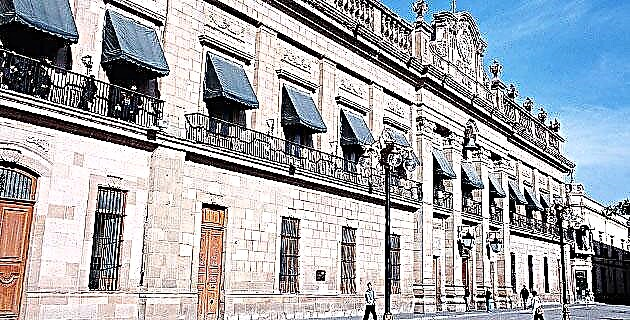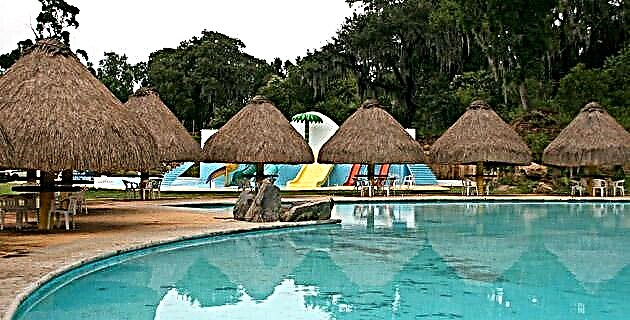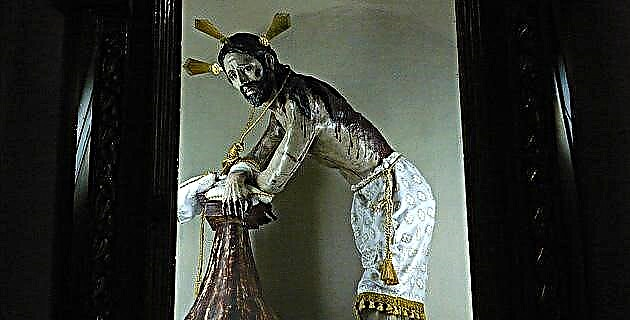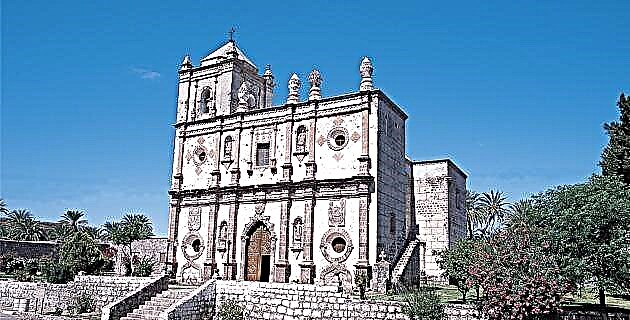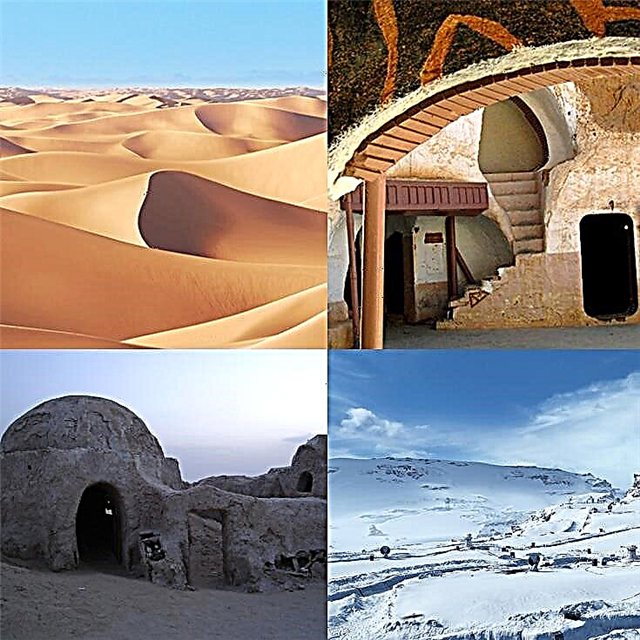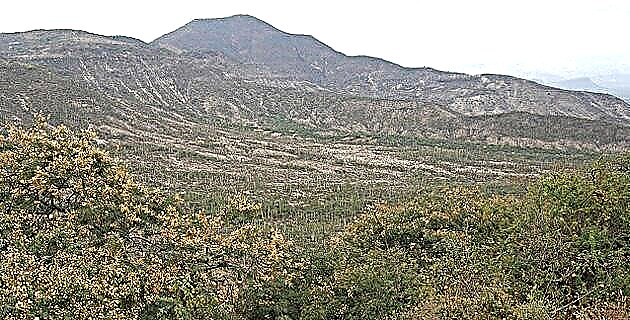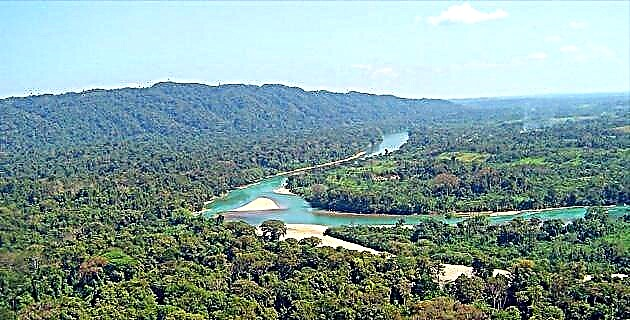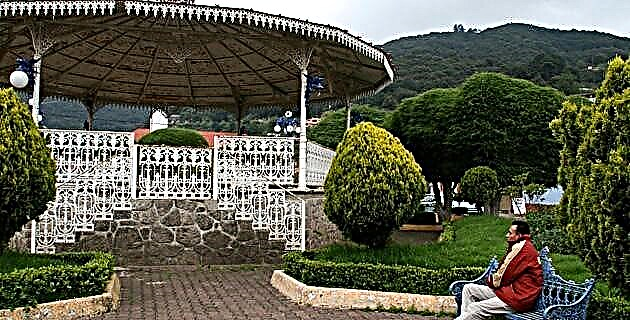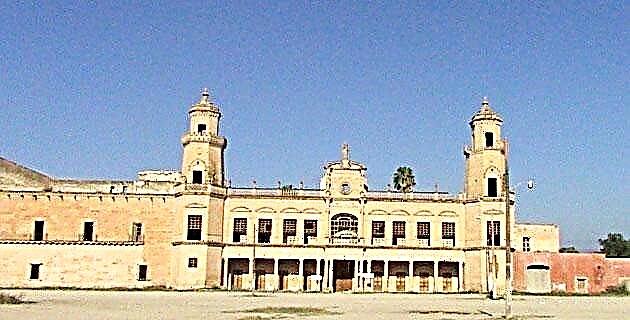
A tower in the distance catches our attention because it does not appear to be a church. We are heading to Guanajuato on the San Luis Potosí-Dolores Hidalgo highway, along the San Felipe Torres Mochas road, and the tower seems to be out of place.
Suddenly, an advertisement on the side of the road indicates the proximity of the Jaral de Berrio farm; Curiosity wins us over and we take a dusty road to see that tower. Upon arrival, we are surprised by an unexpected, unreal world: before us appears a large construction with a long facade, the barn, a farmhouse, a church, a chapel and two towers whose architecture is something very different from what we are used to seeing in this type of buildings. This is how we got to Jaral de Berrio, located in the municipality of San Felipe, Guanajuato.
A splendid past
In its beginnings, these lands were inhabited by Guachichil Indians and when the colonizers arrived they turned them into grazing land and into a ranch for farmers. The first chronicles of the Jaral valley date back to 1592, and by 1613 its second owner, Martín Ruiz de Zavala, began to build. Years go by and owners succeed each other by purchase or inheritance. Among these, Dámaso de Saldívar (1688) stood out, who also owned the property where the now central offices of the National Bank of Mexico are located. Among other things, this man helped with money to the extraordinary but dangerous expeditions that were made at that time in the north of New Spain.
The first Berrio to arrive at this hacienda was Andrés de Berrio, who when he married Josefa Teresa de Saldivar in 1694 became the owner.
The Jaral de Berrio hacienda was so productive that the people who owned it became some of the wealthiest men of their time, to such an extent that they were granted the noble title of marquis. Such was the case of Miguel de Berrio, who in 1749 became the owner of 99 haciendas, Jaral being the most important of them and something like the capital of a “small” state. With him began the sale of agricultural products from the hacienda in other towns, including Mexico.
The years continued to pass and the bonanza continued for this place Juan Nepomuceno de Moncada y Berrio, third Marquis of Jaral de Berrio, was the richest man in Mexico in his time and one of the largest landowners in the world according to Henry George Ward, English minister in 1827. It is said that this marquis had 99 children and each one of them gave him an estate.
Juan Nepomuceno fought in the war of independence, was promoted to colonel by Viceroy Francisco Xavier Venegas, formed a military contingent of peasants from the hacienda known as "Dragones de Moncada" and was the last owner who bore the surname Berrio, since from then on they were all Moncada.
Each of the owners was adding buildings to the hacienda, and it must be said that these architectural contrasts are what make it more interesting. In some cases, it was the workers who, with their savings, did their bit. This was the case with one of the hacienda's key weapons that, by his own effort, began to build the church dedicated to Our Lady of Mercy in 1816. Later, as an annex to it, Don Juan Nepomuceno built a burial chapel for him and his family.
Over time, the hacienda continued to grow in wealth, fame, and importance, and its productive magueyales supplied the mezcal factories of La Soledad, Melchor, De Zavala, and Rancho de San Francisco, where with rudimentary technology but typical of the time, the leaves became the appreciated liquor.
Apart from the production and sale of mezcal, the Jaral farm had other important activities such as the manufacture of gunpowder, for which their nitrous lands and those of the San Bartolo farm were used. Agustín Moncada, son of Juan Nepomuceno, used to say: "my father owns two offices or factories on his estates to make saltpeter, and he also has an abundance of land, water, firewood, people and everything else that concerns the production of gunpowder."
Given the economic importance of the farm, the train track passed half a kilometer. However, this line was later shortened to save distances between Mexico and Nuevo Laredo.
The Jaral hacienda has as all its good and bad anecdotes. Some of them say that Manuel Tolsá, author of the equestrian statue in honor of the King of Spain Carlos IV better known as "El Caballito", took as a model a horse from this farm called "El Tambor".
Years later, during the war of independence, Francisco Javier Mina took it by storm and looted the treasure buried in the room next to the kitchen. The booty consisted of 140,000 bags of gold, silver bars, cash from the ray shop, cattle, pigs, rams, horses, chickens, jerky and cereals.
Many years later a man named Laureano Miranda began to promote the elevation of the town of Jaral to the category of town, which ironically should be called, Mina. But the petition did not bear fruit, surely due to the influence and power of the hacienda owners, and it is said that the Marquis himself ordered the expulsion and burning of the homes of all those who promoted that name change.
Already in this century, while the bonanza continued, Don Francisco Cayo de Moncada ordered the most attractive of the hacienda to be built: the neoclassical mansion or manor house with its Corinthian columns, its caryatids, its ornamental eagles, its noble coat of arms, its towers and the balustrade at the top.
But with the Revolution the decay of the place began due to fires and the first abandonments. Later, during the Cedillo rebellion of 1938, the big house was bombed from the air, without causing any casualties; and finally from 1940 to 1950, the hacienda fell apart and ended up being ruined, with Dona Margarita Raigosa y Moncada being the last owner.
A PENOUS PRESENT
In the old case of the hacienda, there are three main houses that follow the front line of the mansion: the first was the house of Don Francisco Cayo and the most elegant, the one with the clock, the one with the two towers. The second was built of stone and smooth quarry, without ornaments, with a gazebo on the second floor, and the third was designed with a modern structure. They are all on two floors and their main doors and windows face east.
Despite the deplorable current conditions, on our tour we were able to perceive the ancient grandeur of this hacienda. The central courtyard with its fountain is no longer as colorful as it surely was in its best days; The three wings around this patio contain several rooms, all abandoned, stinking with pigeon guano, with their demolished and moth-eaten beams and their windows with cracked shutters. This scene is repeated in each and every one of the hacienda's rooms.
The west wing of the same central patio has an elegant double staircase where you can still see part of the murals that decorated it, which goes up to the second floor where the spacious rooms are covered with Spanish mosaics, where large parties and festivals were once held. dances to the beat of the music of renowned orchestras. And further on is the dining room with remains of French tapestry and ornaments, where on more than one occasion opulent delicacies were served to celebrate the presence of a ruler, an ambassador or a bishop.
We continue walking and we pass through a bathroom that by itself breaks with the gray and gloomy of everything seen. There is, still in relatively good condition, an immense oil painting called La Ninfa del Baño, painted in 1891 by N. González, which due to its color, freshness and innocence makes us forget at times the present where we are. However, the wind that seeps through the cracks and causes the loose windows to creak breaks into our reveries.
Following the tour we entered more and more rooms, all in the same deplorable condition: basements, patios, balconies, orchards, doors that lead nowhere, perforated walls, excavation shafts, and dry trees; and suddenly we find color next to a room adapted for someone's house: a gas tank, a television antenna, flamboyants, rose bushes and peaches, and a dog that is unfazed by our presence. We suppose the manager lives there, but we didn't see him.
After crossing a gate we find ourselves at the back of the hacienda. There we see the sturdy buttresses, and as we walk north we cross a gate and arrive at the factory that still has some of its Philadelphia-made machinery. Mezcal or gunpowder factory? We do not know for sure and there is no one who can tell us. The cellars are spacious but empty; the wind and the chirping of bats break the silence.
After a long walk we pass through a window and, without knowing how, we realize that we have returned to the main house through a very dark room that in one corner has a fine and well-preserved spiral staircase of wood. We climbed the stairs and came to a room adjoining the dining room; then we go back to the central courtyard, go down the double staircase and get ready to leave.
Several hours have passed, but we do not feel tired. To leave we look for the manager, but he does not appear anywhere. We lift the bar on the door and return to the present, and after a well-deserved rest we visit the church, the chapel and the barns. And so we end our walk for a moment in history, going through the labyrinths of a farm very different from the others; perhaps the largest in colonial Mexico.
A PROMISING FUTURE
Talking with the people in the tent and in the church we learn many things about Jaral de Berrio. There we found out that there are some 300 families that currently live in the ejido, of their material shortages, of the long wait for a medical service and of the train that stopped traveling these lands many years ago. But the most interesting thing is that they told us about a project that there is to make this farm a tourist center with all the necessary modernity but fully respecting its architecture. There will be conference rooms, pools, restaurants, historical tours, horseback riding and much more. This project would undoubtedly benefit the locals with new job opportunities and an extra income, and it appears to be run by a foreign company that is monitored by INAH.
We return to the car and when we return to the road we see the small but representative railway station, which, as a reminder of the old times, still stands tall. We are heading to a new destination, but the image of this impressive place will be with us for a long time.
In the church there is for sale a book on the history of this hacienda called Jaral de Berrio y su Marquesado, written by P. Ibarra Grande, which is very interesting in its content and helped us to draw some historical references that appear in this article .
IF YOU GO TO JARAL DE BERRIO
Coming from San Luis Potosí, take the central highway to Querétaro, and a few kilometers ahead turn right towards Villa de Reyes, to reach Jaral del Berrio, which is only 20 kilometers from here.
If you are coming from Guanajuato, take the highway to Dolores Hidalgo and then to San Felipe, from where the hacienda is 25 kilometers away.
Hotel services, telephone, gasoline, mechanics, etc. he finds them in San Felipe or Villa de Reyes.


